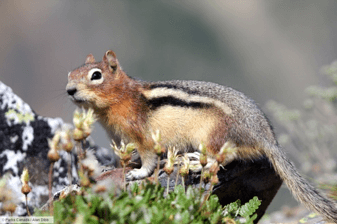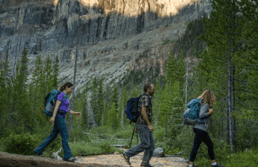Getting Started
Here are some ways to get started on your entry.
Step 1: A conservation project?
This is a project that your class plans and executes. It is linked to cultural/historical and/or environmental conservation in your community. What can students do to help the environment? What can students do to promote the culture and history of the community?

Step 2: Choosing a topic
Is your class passionate about the environment? Incredibly interested in history or culture? What is going on in the environment in your community? Do some research and determine what you could do at your school or in your community.
environment in your community? Do some research and determine what you could do at your school or in your community.
What are some examples of conservation projects?
No matter what subject you teach, this contest can be for your class! We’ve come up with some examples below.
Is your class interested in the environment?
- What about taking part in a bioblitz? Or how about facilitating your own?
- Think about participating in a shoreline cleanup or pick garbage and see what a difference you can make!
- Get seeds, plant a bee garden and get others to do the same.
Is your class interested in history or culture?
- Could your class participate in a local archeology project?
- Is there a cultural event looking for valuable volunteers?
Step 3: Planning the project
Referring to the judging rubric, have students think about:
- what they will need to execute their project and video;
- when the project will take place;
- how long it will take to execute the project;
- who will be involved and what their roles will be;
- where the project will take place; and
- what is the importance of this project.

Step 4: Doing the project & creating a video
- Choose the right equipment: A Smartphone may be the most convenient recording device in some situations, but without a tripod, your video can end up shaky and blurry. Ask around to see if you can borrow a camera that can connect to a tripod. Also, the audio recorders on most cameras and Smartphones tend to pick up background noise. If possible, attach a sound recording device, like a microphone, to the camera, or record some sound separate from the video and edit it in later.
- Get the whole class involved: Try to assign roles that will appeal to individual students. Some students love to be in front of the camera, some prefer to plan, some are great with post-production software.
- Consider permissions: Not everyone likes to be in front of the camera. Please get permissions to take video and photos of people and places.
- It’s all in the editing: There are endless ways to create or use footage for your video. Is your class interested in drawing or claymation? You might also have access to pre-recorded footage or stills that would work perfectly in your class’s creation. If you do use photos or video from Parks Canada or another source that is not your own, please ensure that you get permission to use that work.

Step 5: Promoting your video
Now that you have created a great video, you will need to promote it to get those votes! Regardless of your community’s size, there are many ways to promote your video far and wide. Here are some ideas that previous classes have tried:
- Create flyers: Design some simple advertisements and hand them out at school or in your community.
- Contact the media: Contact your local media and invite them to report on your project. Email the editor or producer at your local newspaper, TV station or radio station.
- Contact local businesses: Approach community businesses to help you promote your video through advertisements, online efforts or simply by informing their employees and customers.
- Organize a family night: Invite students’ families to the school for a screening of your video. Use this opportunity to encourage everyone to vote!
- Use social media: Create a Facebook, Twitter or Instagram page that you and your students can share the community. Social media is a great way to encourage and remind your supporters to vote! Make sure that you act the same way on social media as you would in person. Respectful and encouraging posts are the best ways to raise the profile of your program.
To help you promote the contest on social media, Can Geo Education and Parks Canada are very active on Facebook, Twitter and Instagram. Feel free to share messages from the following pages on your class project’s page:
#CoolestSchoolTrip
If you have any questions, please use the Contact form found here.


